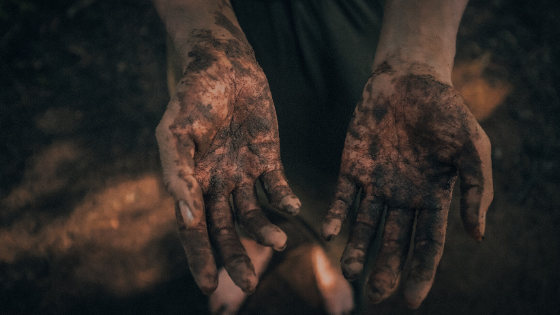Mud day is an opportunity for parents to participate in the environmental education of their kids by encouraging them to play and learn with mud. We’ve outlined our five favourite mud day activities below, enjoy!
-
Mud day cake decorating
Supply your kids with a bucket of mud, some muffin tins and a few shovels or spoons, and let the mud day party start! It is the clue for successful environmental education to input your kids that learning ecology and nature is fun!
Let your kid’s imaginations go wild as they start to create their own mud pies, cupcakes and cakes. Encourage them to get messy and to decorate their cakes with things they find in nature. Remember to teach your kids to only pick up things off the ground that are no longer connected to their home-tree, branch, or bush.
Once the pies and cakes are ready, have your kids serve them up and then start again! When the fun is done, take clean up time as an opportunity for environmental education: explain how things that come from nature can go back to nature! Try having your kids find a place in your garden where you can put back all the organic materials they have used.
-
Build your own mud day wormery
A wormery is a mini habitat for worms to live, grow and reproduce. Worms have simple needs and, therefore, a wormery is a super easy mud day activity that has an environmental education benefit and can get your kids excited about composting.
To create your own wormery you will need: (1) a transparent container, (2) something to poke holes in your container, (3) soil, (4) sand, and (5) rocks/gravel.
Start by poking holes in the top and bottom of your container; the bottom holes help with drainage and the top holes let air in. Then put a small layer of rocks/gravel at the bottom of your container, also to help with drainage. This is a great place to let your kids join in on the fun: a great way to get your kids excited about environmental education is to let them help build the wormery! Help your kids to layer sand and dirt, about two layers of each with each dirt layer being larger than each sand layer. Then finish by putting some dead leaves or vegetable scraps into the wormery. Add some water if your dirt is dry and then add in the worms!
Earthworms prefer cool temperatures so let your kids observe the earthworms inside for a few days before letting them release the earth worms into the garden or compost in the early morning.
This mud day activity is truly a win-win situation: your garden will love the addition of worms and your kids will get an environmental education as they learn about habitats, composting and the Earth’s good friend: worms.
-
Mud day painting and zero-waste environmental education talks
Painting with mud is a fun activity that can keep your kids busy for hours.
All you need is a bucket of mud, a canvas, and some paint brushes for painting, but kids can always just use their fingers. Less equipment and using their own body is part of environmental education. The canvas can be anything from an old white board, an old sheet hung up, a leftover cardboard box, a fence, or a driveway. The great thing about mud is that it washes away with a spray of the hose!
Use this mud day activity as an environmental education opportunity to talk about zero-waste with your kids! Explain the value of using products that can compost back into the earth, such as mud, instead of sitting in landfills or our oceans, such as acrylic paints.
-
Mud day bin activity
All you need is a container and some mud to make mud day exciting for kids! Give your kids some spoons, bowls and let them play. You won’t believe how creative your kids will get with their mud — from making mud-pies to opening mud spas. Let your kids explore the possibilities of mud — an essential environmental education begins with appreciating the environment for what it is.
-
Inspector mud day
Don’t have an outdoor space available to you? You can still celebrate mud day and get some environmental education into your young ones.
All you need is a tray, container, some mud or dirt, a magnifying glass, a pen or pencil, and some paper. The first step is to help your kids collect some dirt and mud, whether it’s from the front yard, the park or the grass near the sidewalk. Then spread the mud/dirt on the tray and encourage your kids to use a magnifying glass to inspect it.
Your kid is now inspector mud day and it is their job to make a list of things they see on the paper. Let them explore the mud and draw/write their observations. For added fun, let your kids play with cups, sand sifters or beach toys. As they play, your kids will find things that surprise them and will have unique observations that will help start up discussions that lay the basis for environmental education.
Mud day is June 29th and we highly encourage that you and your young ones get out there to explore and experience environmental education! Best of luck on your mud day adventures and remember to tag us in your mud day posts on social media!

